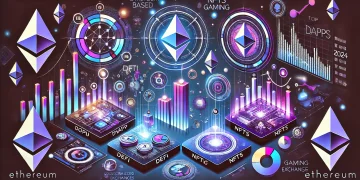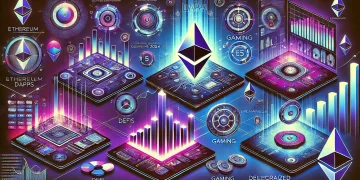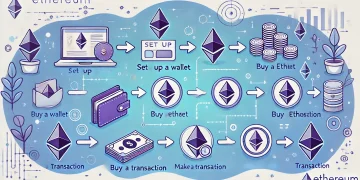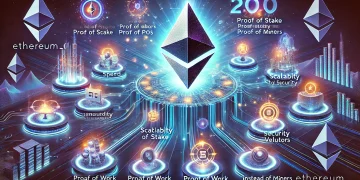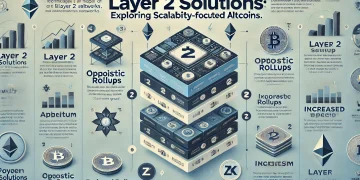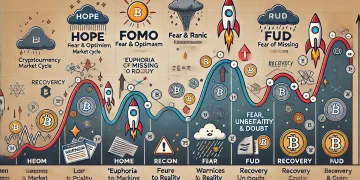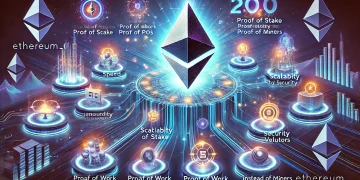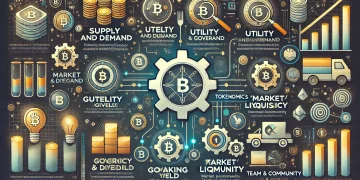As blockchain networks continue to grow in popularity and adoption, scalability has emerged as one of the most significant challenges facing the technology. Layer 2 solutions have become increasingly important in addressing these scalability issues, offering innovative approaches to increase transaction throughput while maintaining the security and decentralization of underlying blockchain networks.
Understanding the Scalability Challenge
The fundamental scalability problem in blockchain networks stems from their inherent design: every node in the network must process and store every transaction to maintain security and decentralization. This requirement creates a bottleneck that limits transaction throughput and increases costs. Major networks like Ethereum have historically struggled with high fees and slow transaction times during periods of network congestion.
Traditional blockchain networks face what is known as the “blockchain trilemma” – the challenge of achieving optimal levels of decentralization, security, and scalability simultaneously. Layer 2 solutions have emerged as a promising approach to address the scalability aspect without compromising the other two crucial elements.
Types of Layer 2 Solutions
State Channels: Direct Interaction Protocols
State channels represent one of the earliest Layer 2 scaling solutions, enabling participants to conduct multiple transactions off-chain while only settling the final state on the main blockchain. This approach significantly reduces the number of on-chain transactions required for frequent interactions between parties.
The technology has found particular success in payment channels and gaming applications, where multiple rapid transactions occur between the same parties. State channels can process transactions instantly and with minimal fees, making them ideal for micro-transactions and real-time applications.
Rollups: Bundling Transactions for Efficiency
Rollups have emerged as one of the most promising Layer 2 scaling solutions, particularly for smart contract platforms like Ethereum. These systems work by bundling multiple transactions into a single transaction that is then submitted to the main chain, significantly reducing gas fees and increasing throughput.
Two main types of rollups have gained prominence: Optimistic Rollups and Zero-Knowledge (ZK) Rollups. Each offers different trade-offs between security, speed, and complexity. Optimistic Rollups assume transactions are valid by default and only verify them when challenged, while ZK Rollups provide mathematical proof of transaction validity.
Plasma: Child Chain Architecture
Plasma frameworks create child chains that process transactions independently while inheriting the security of the main chain. These child chains can be customized for specific applications, allowing for optimized performance based on particular use cases.
The technology enables the creation of application-specific blockchains that can handle high transaction volumes while periodically anchoring their state to the main chain. This approach has proven particularly valuable for decentralized exchanges and gaming platforms.
Implementation Success Stories
The Rise of Optimistic Rollups
Optimistic rollups have seen significant adoption, with platforms like Arbitrum and Optimism leading the way. These solutions have dramatically reduced transaction costs while maintaining compatibility with existing Ethereum smart contracts. Users have benefited from faster transaction times and lower fees while still enjoying the security guarantees of the main Ethereum network.
Major decentralized applications have migrated to these platforms, bringing their users and liquidity with them. The success of these implementations has demonstrated the practical viability of Layer 2 scaling solutions in real-world applications.
ZK Rollups: Innovation in Privacy and Scalability
ZK rollups have made substantial progress in combining privacy features with scalability improvements. Projects implementing this technology have achieved impressive transaction throughput while maintaining strong security guarantees through zero-knowledge proofs.
These systems have found particular success in applications requiring both high performance and privacy, such as decentralized exchanges and payment systems. The ability to process thousands of transactions per second while providing cryptographic proof of validity has made ZK rollups increasingly attractive for enterprise applications.
Technical Infrastructure and Integration
Cross-Layer Communication
The development of efficient communication protocols between Layer 1 and Layer 2 solutions has been crucial for their successful implementation. These bridges enable seamless movement of assets and data between different layers while maintaining security and consistency.
Recent advances in bridge technology have improved the user experience and reduced the complexity of interacting with Layer 2 solutions. This progress has been essential for broader adoption of these scaling solutions.
Development Tools and Frameworks
The maturation of development tools and frameworks for Layer 2 solutions has accelerated their adoption. Enhanced documentation, simplified deployment processes, and improved testing capabilities have made it easier for developers to build and deploy applications on Layer 2 platforms.
Frequently Asked Questions
Q: How do Layer 2 solutions maintain security while increasing scalability? A: Layer 2 solutions maintain security by anchoring their state to the main blockchain while processing transactions off-chain. They use various cryptographic techniques to ensure transaction validity and provide mechanisms for dispute resolution.
Q: What are the main differences between different Layer 2 approaches? A: Different Layer 2 solutions offer varying trade-offs between speed, cost, and security. State channels excel at frequent transactions between known parties, rollups provide general-purpose scaling with strong security guarantees, and Plasma chains offer application-specific optimization.
Q: How do Layer 2 solutions affect transaction costs? A: Layer 2 solutions significantly reduce transaction costs by bundling multiple transactions together and spreading the main chain gas fees across many users. This can result in cost reductions of 90% or more compared to Layer 1 transactions.
Q: What challenges do Layer 2 solutions face? A: Common challenges include complexity in user experience, potential security risks in bridge implementations, and the need for widespread wallet and application support. Educational barriers and technical integration challenges also exist.
Q: How does Layer 2 adoption impact the base blockchain? A: Layer 2 adoption helps reduce congestion on the base layer, leading to lower fees and improved performance for remaining Layer 1 transactions. It also enables the base layer to focus on security and decentralization rather than maximum transaction throughput.
Future Developments
Interoperability and Standards
The future of Layer 2 scaling solutions increasingly focuses on interoperability between different platforms and standardization of protocols. This development will enable more seamless movement of assets and data across various Layer 2 solutions while maintaining security and efficiency.
Enhanced User Experience
Continued improvements in user experience are making Layer 2 solutions more accessible to mainstream users. Developments in wallet integration, simplified onboarding processes, and improved transaction management are reducing the complexity of using these scaling solutions.
Impact on Blockchain Ecosystems
Network Effects and Adoption
The successful implementation of Layer 2 solutions has created positive network effects, attracting more users and developers to blockchain platforms. This increased adoption has led to a virtuous cycle of development and innovation in the space.
Economic Implications
Layer 2 solutions have significant economic implications for blockchain networks, including changes to fee structures, token economics, and validator incentives. Understanding these implications is crucial for sustainable ecosystem development.
Conclusion
Layer 2 solutions represent a crucial development in blockchain technology, effectively addressing the scalability challenges that have historically limited blockchain adoption. Their successful implementation across various platforms demonstrates the viability of off-chain scaling approaches while maintaining the security and decentralization benefits of blockchain technology.
As these solutions continue to mature and evolve, they will play an increasingly important role in enabling the next generation of blockchain applications. The combination of reduced costs, increased throughput, and maintained security guarantees positions Layer 2 solutions as a fundamental component of blockchain infrastructure going forward.

